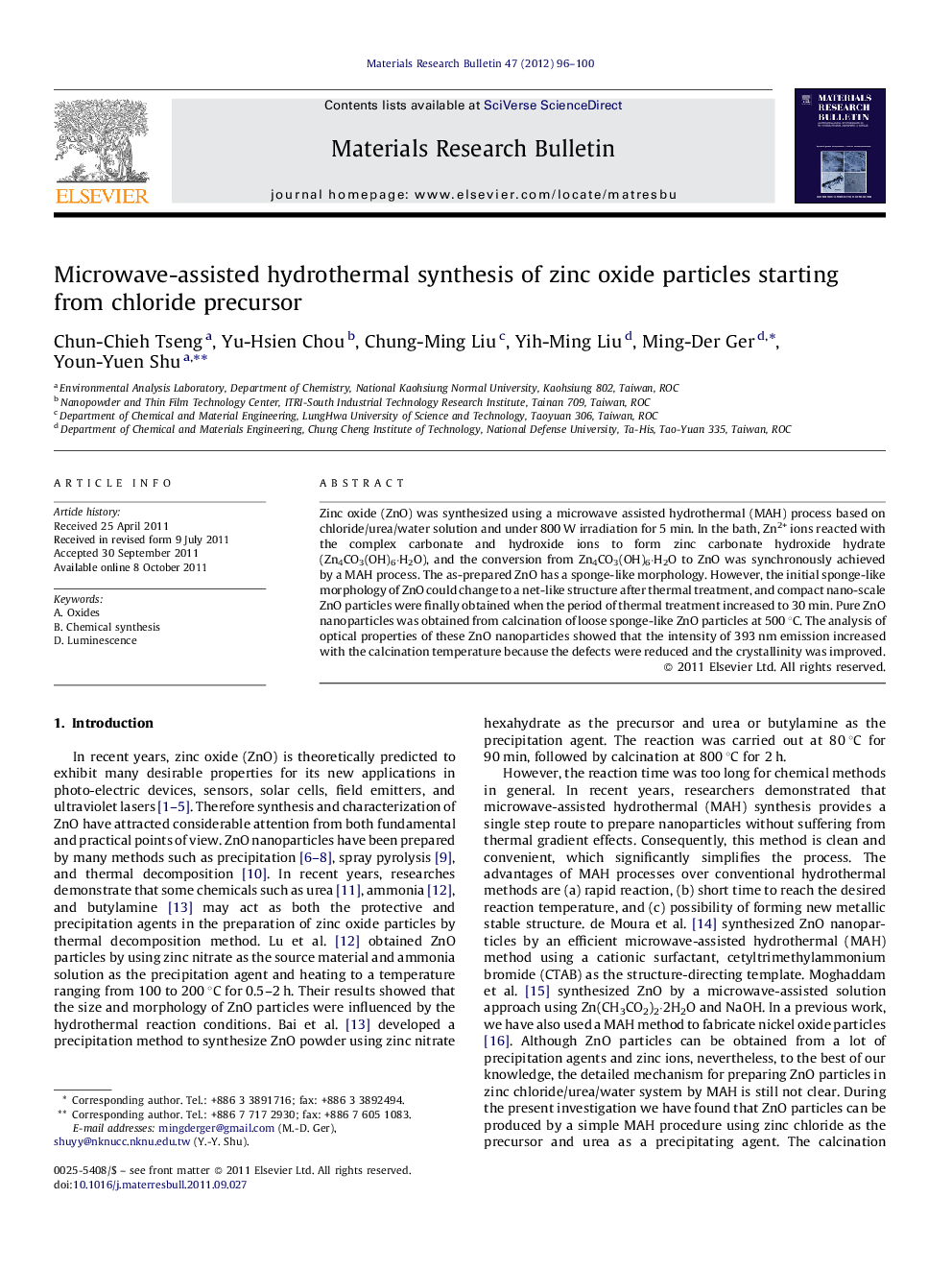| Article ID | Journal | Published Year | Pages | File Type |
|---|---|---|---|---|
| 1489317 | Materials Research Bulletin | 2012 | 5 Pages |
Zinc oxide (ZnO) was synthesized using a microwave assisted hydrothermal (MAH) process based on chloride/urea/water solution and under 800 W irradiation for 5 min. In the bath, Zn2+ ions reacted with the complex carbonate and hydroxide ions to form zinc carbonate hydroxide hydrate (Zn4CO3(OH)6·H2O), and the conversion from Zn4CO3(OH)6·H2O to ZnO was synchronously achieved by a MAH process. The as-prepared ZnO has a sponge-like morphology. However, the initial sponge-like morphology of ZnO could change to a net-like structure after thermal treatment, and compact nano-scale ZnO particles were finally obtained when the period of thermal treatment increased to 30 min. Pure ZnO nanoparticles was obtained from calcination of loose sponge-like ZnO particles at 500 °C. The analysis of optical properties of these ZnO nanoparticles showed that the intensity of 393 nm emission increased with the calcination temperature because the defects were reduced and the crystallinity was improved.
Graphical abstractSchematic of the mechanism for ZnO nanoparticles obtained by the calcination.Figure optionsDownload full-size imageDownload as PowerPoint slideHighlights► Nanocrystalline ZnO particles were successfully prepared by a microwave-assisted method. ► Sponge-like morphology of ZnO change to a net-like structure after thermal treatment. ► The PL spectra exhibited a nearband-edge emission at 393 nm.
